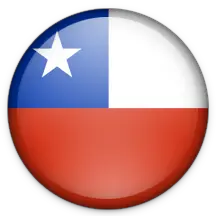
Coalescent Agents: Properties and Uses in Paints
Coalescent agents in paints are additives that allow a solid film to form under adverse conditions, such as low temperatures and high humidity.
These agents must have specific properties in order to provide broad efficacy in different types of paint formulas and application conditions.
Coalescent agents properties
- Low water solubility
Water-soluble coalescing agents are distributed between the polymer particles and the aqueous phase. The more hydrophilic the coalescing agent is, the better it will be dispersed in the aqueous phase. As the film dries, water evaporates and any remaining coalescing agent in the aqueous phase will slowly diffuse into the environment, causing a reduction in efficiency.
In contrast, partially water-soluble coalescing agents break down into polymer particles, so loss during water evaporation is minimal. Additionally, water-insoluble coalescing agents are less likely to diffuse into porous substrates.
- Evaporation rate suitable for application
The evaporation rate should be suitable for the specific application. Using a coalescing agent with a very slow evaporation rate in a low PVC compound can cause problems such as blockages, among others.
On the other hand, if the evaporation rate is too high, it can cause problems in high humidity conditions, where water evaporation from the film would be delayed. In that case, solvent evaporation is hardly affected by moisture, so the agent could evaporate faster than water, and this would prevent solid film forming.
- Excellent hydrolytic stability
Hydrolytic stability is a measurement to know the coalescing agents degree of resistance to hydrolysis to see if it can be used in low and high pH. Hydrolysis can cause decreased stability in the paint container, odor, and even generate antifouling properties as many biocides only work within a narrow pH range.
- Eco-friendly properties: Zero-VOC and Odorless Paints
Today’s paint and coatings industry looks for properties that can meet the requirements of different groups:
- The world wants products that are less harmful to the environment.
- The final consumer wants simpler, more resistant products that require less maintenance and are also odorless.
- The manufacturers look for formulas that meet these needs, but can also provide all the properties we already know, in addition to maintaining the products at competitive prices.
In the current market there are several coalescing agents based on different molecules, and many comply with Directive 2004/42/EC of the European Parliament and of the Council on limiting emissions of volatile organic compounds (VOC), which is already adopted in various Latin American countries.
The use of coalescent agents in Latin America has varied from country to country as it is often part of the production of architectural coatings and paints. In Brazil, its use has decreased after a drop in paint production in recent years, but Central America and the Caribbean show a promising growth. In general, experts in the industry expect a 2.1% growth in the coming years.
At Mathiesen we offer various coalescent agents which can be used in many formulas and for different applications. We have traditional options as well as innovative ones that meet the odorless and Zero-VOC standards, in compliance with the European Directive and the World Green Building Council (GH-11) regulation for sustainable constructions.
If you need help to create your paint formulas, want to know alternatives, or just looking for a guide to find out which coalescent agents match your formulation, contact us and one of our experts will get back to you shortly.
















